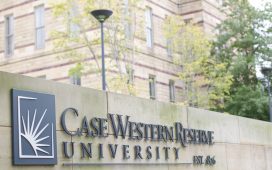In elementary school, we all learned about the three major major sources of energy: fossil fuels (coal, natural gas, and petroleum), nuclear energy, and renewable energy. However, have you ever wondered how electricity gets to your home?
As you probably learned in school, some think that electrons simply ‘flow’ from one end of the power lines towards the other and finally to our homes. Unfortunately, that is far from the truth. In this piece and with the help of the video below, we’re going to discuss one of the most common misconceptions about electricity.
The electricity in the power grid comes in the form of alternating current, or AC, which means electrons in the power lines are just wiggling back and forth. But they never actually go anywhere. So, how does the electricity gets to your house if the electrons in the grid are going nowhere? That is part of the mystery of electrical energy. That is part of the mystery of electrical energy. What really happens is that electrons do not carry any energy. It is the field (not EM waves) that transmits the energy.
So, if the charges don’t come from the power plant to your home, how then does the electrical energy actually reach you? These are the questions that YouTuber and a former teacher Veritassium tries to answer in this very educational video.
When Veritassium used to teach this subject, he would explain to his students that power lines are like this flexible plastic tubing and the electrons inside are like this chain. However, Veritassium went on to say that his example is wrong.
For one thing, Veritassium said that there is no continuous conducting wire that runs all the way from a power station to your house. “No, there are physical gaps,” Veritassium explained in the video. “There are breaks in the line,
like in transformers where one coil of wire is wrapped on one side, a different coil of wire is wrapped on the other side. So, electrons cannot possibly flow from one to the other,” Veritassium added.
So, how does it actually work? To answer the question, Veritassium takes on a journey through the 1860’s and ’70s and how Scottish physicist, James Clerk Maxwell formulated the theory of electromagnetism, which showed that light was electromagnetic radiation. Maxwell’s theory is later considered to have paved the way for both quantum mechanics and Einstein’s theory of special relativity. Maxwell was also famous for his revolutionary work on electricity, magnetism, optics, and the kinetic theory of gases. Maxwell discovered that light is made up of oscillating electric and magnetic fields.
Back to the story about the electricity. Veritassium explained how Maxwell’s discovery coupled with Maxwell’s former students, John Henry Poynting’s discovery, give us a better understanding of how power gets to our homes. In the video below, Veritassium clears the misconceptions and answers the questions of how power plants actually transmit electricity and how our electronics receive it. Enjoy!







